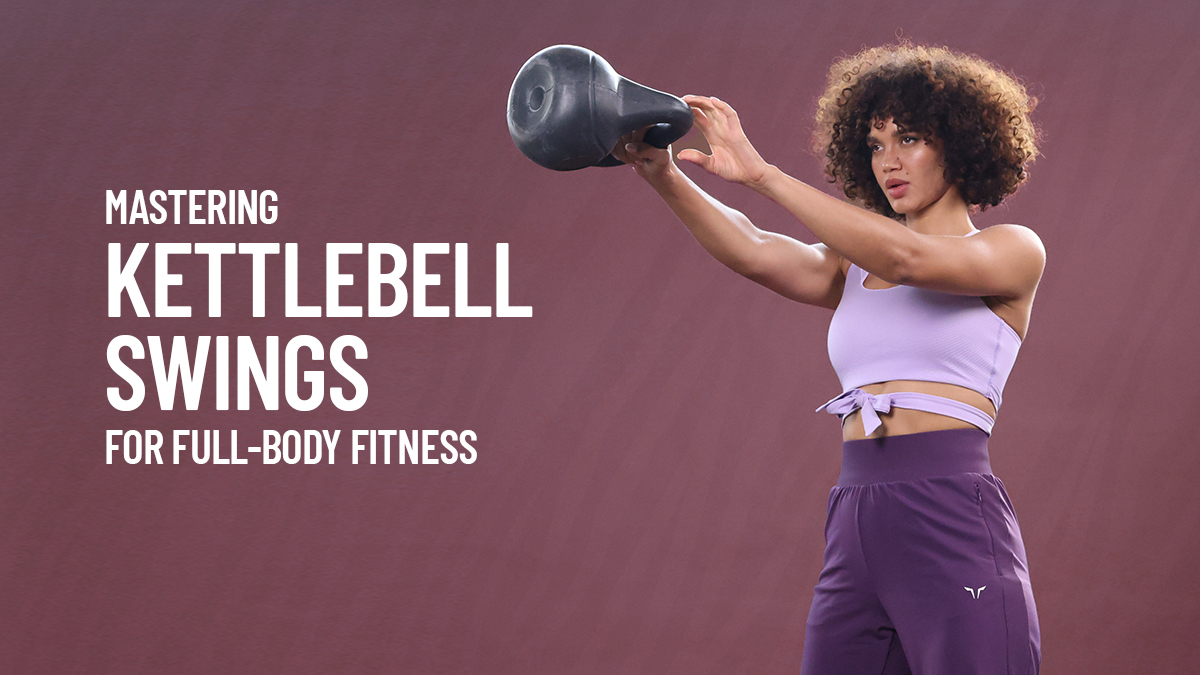What Are Kettlebell Swing Workouts – In A Glance
Kettlebell swing workouts have surged in popularity, and it’s clear why. This dynamic exercise engages a wide range of muscles, from the core to the shoulders. In a single motion, the kettlebell swing delivers both strength training and cardiovascular benefits. Not only does it work multiple muscles, but it also offers notable kettlebell swing benefits like improved balance and a significant calorie burn. If you’re seeking an efficient, full-body workout, the kettlebell swing is a top choice. Dive in and experience the transformative power of kettlebell swing workouts!
How To Do a Kettlebell Swing | Common Mistakes | Importance | Science-Backed Benefits | Variations | Routine & Tips | Final Thoughts | FAQs
How To Do a Kettlebell Swing: Mastering Your Form
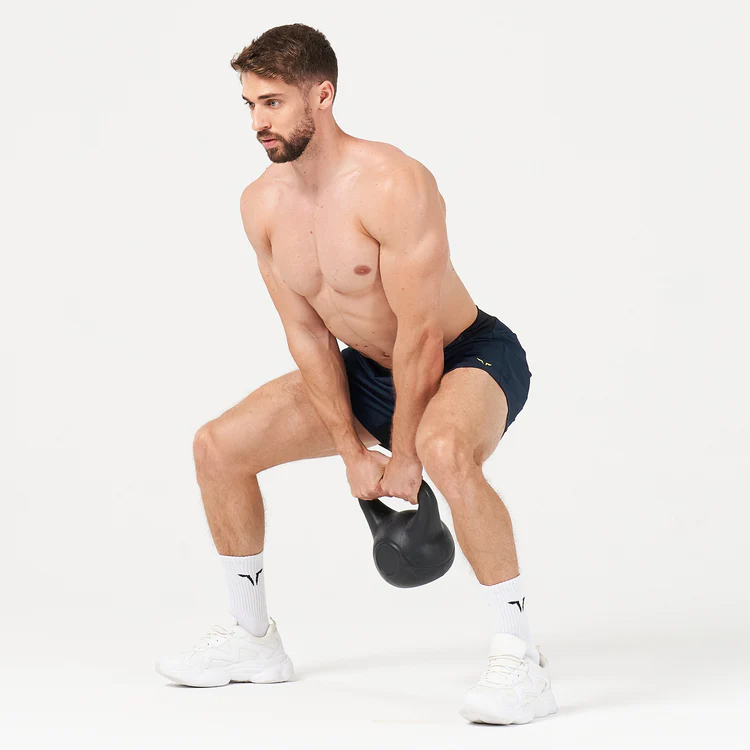
To truly reap the kettlebell swing benefits, you need to master the technique. Proper form not only ensures you tap into all the kettlebell swing muscles worked but also minimizes the risk of injury.
Let’s break down the steps for a flawless kettlebell swing:
- Position Your Feet: Start with your feet slightly wider than shoulder-width apart. This stable stance builds the foundation of the kettlebell swing.
- Grip the Kettlebell: Bend your hips and knees, maintaining a straight back. Reach out and hold the kettlebell handle with both hands. Make sure your grip is firm but not overly tight.
- Initiate the Swing: Keeping your arms straight, lift the kettlebell slightly and swing it back between your legs. This is your starting position.
- Power Through the Hips: Drive through your hips, pushing the kettlebell forward. Remember, your arms aren’t lifting the weight – they’re just guiding it. The power should come from your hips and core.
- Reach the Peak: Swing the kettlebell up to chest height. Your body should form a straight line from your head to your heels. Engage your core so you don’t lean backward.
- Control the Descent: Let the kettlebell swing back down between your legs. Control your movement, preparing for the next upward swing.
- Maintain a Neutral Spine: Throughout the kettlebell swing workout, keep your back straight. A neutral spine protects against injuries and ensures the correct muscles are engaged.
- Stay Focused: It’s crucial to remain present during the kettlebell swing. Proper technique requires consistent attention for safety and effectiveness.
With the right form, you’ll make sure the right muscles are targeted!
Sculpt a strong core with a lower ab workout!
Common Mistakes in Kettlebell Swing Workouts and How to Avoid Them

Executing the perfect kettlebell swing is no small feat. While the benefits are substantial, so are the challenges in mastering the technique.
Here’s a rundown of common mistakes in kettlebell swing workouts and how to steer clear of them:
Using the Upper Body Too Much: Some beginners mistakenly use their arms to lift the kettlebell rather than driving power from their hips.
How to Correct: Remember, the kettlebell swing is a hip-driven movement. Focus on pushing your hips forward, letting your arms simply guide the kettlebell.
Bending Knees Excessively: Overbending the knees can turn the swing into a squat-like motion.
How to Correct: While a slight bend in the knees is essential, ensure you’re hinging primarily at the hips.
Lack of Core Engagement: Neglecting to tighten the core can put undue stress on the lower back.
How to Correct: Actively engage your core throughout the swing, imagining you’re bracing for a punch to the stomach.
Swinging Too High or Too Low: An overly high swing can strain the shoulders, while a too-low swing reduces the exercise’s effectiveness.
How to Correct: Aim to swing the kettlebell to chest height, ensuring it’s in line with your shoulders at the peak.
Poor Starting Position: If you start too close or too far from the kettlebell, you might strain your back.
How to Correct: Begin with the kettlebell about a foot in front of you, allowing for a natural reach and swing back.
Rounding the Back: A rounded spine can lead to back injuries.
How to Correct: Maintain a neutral spine throughout the kettlebell swing workout. Think of puffing your chest out slightly and keeping your shoulder blades retracted.
Not Breathing Properly: Holding your breath or erratic breathing can lead to early fatigue.
How to Correct: Exhale powerfully during the upward phase of the swing and inhale during the downward phase.
Not Wearing The Right Gear: Wearing lounge wear that isn’t designed for performance.
How to Correct: Make sure you’ve got the right kind of workout clothes for women. Fellas, you also need to make sure you’ve got the right gym wear on!
Learn about other hyrox exercises.
Why Kettlebell Swing Workouts are Essential for Fitness
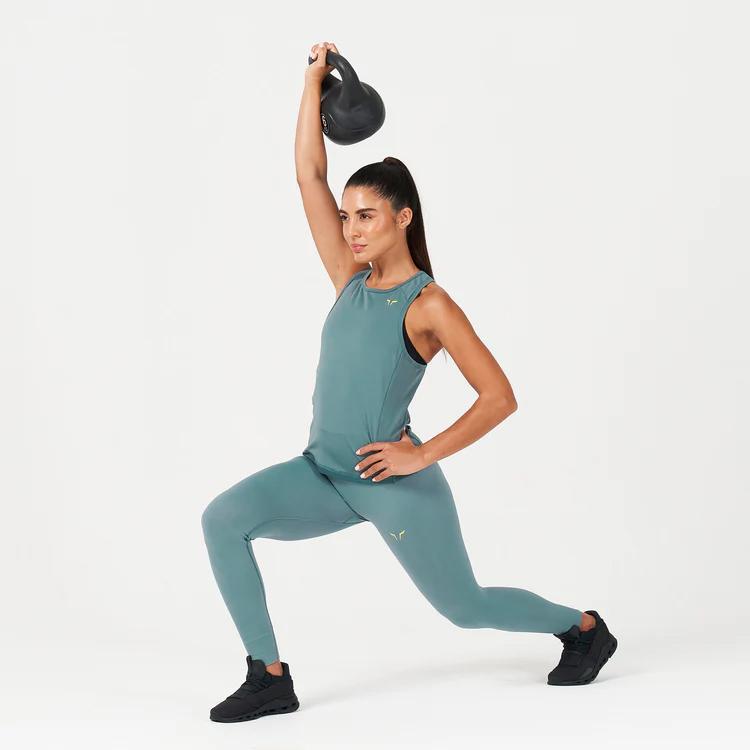
Kettlebell swing workouts are not just a fitness trend – they’re a game-changer. Incorporating kettlebell swings into your routine brings a fresh dynamic to traditional workouts.
Here’s why they stand out:
Muscles Worked
- Targets an array of muscles in one fluid motion.
- Engages everything from your core to your shoulders, ensuring a comprehensive workout.
Key Benefits
- Builds muscle beyond conventional exercises.
- Enhances balance and posture.
- Boosts cardiovascular health, keeping your heart strong.
- Burns calories rapidly, aiding in weight management.
Every swing challenges both your strength and endurance, maximizing your workout’s efficiency. If you’re aiming for a holistic fitness approach, kettlebell swing workouts are indispensable. They blend strength and cardio seamlessly, proving their pivotal role in a balanced fitness regime.
So, the next time you’re mapping out your workout, make room for the dynamic power of the kettlebell swing!
New to working out? Here’s your at-home full body workout plan!
The Science Behind Kettlebell Swing Benefits

Full-Body Muscle Activation
One of the standout features of kettlebell swing workouts is the all-encompassing muscle activation they offer. When you perform a kettlebell swing, it’s not just an isolated muscle that’s engaged. Instead, the motion taps into a wide array of muscles spanning from your toes to your fingertips.
The kettlebell swing muscles worked include the:
- Core
- Glutes
- Hamstrings
- Quads
- Lats
And even the stabilizing muscles that often get overlooked in other exercises.
This comprehensive engagement ensures that with each swing, you’re giving your body a full workout, maximizing the efficiency of your exercise routine.
Strengthen your lower body with a complete dumbbell leg workout!
Explosive Strength and Endurance
Kettlebell swing benefits aren’t restricted to just muscle activation. The very nature of the swing, with its powerful upward thrust and controlled descent, builds explosive strength. This kind of strength is crucial for athletes and fitness enthusiasts alike, aiding in quick bursts of energy and power.
Additionally, the repetitive nature of kettlebell swing workouts ensures that, over time, your endurance levels get a significant boost. Each swing pushes your muscles to maintain their performance over extended periods, conditioning them for both strength and stamina.
Build full body strength and endurance with split workout!
Cardiovascular Boost and Fat Burn
But the wonders of the kettlebell swing don’t stop at strength and endurance. The dynamic movement, coupled with the weight of the kettlebell, ensures your heart rate rises. This cardiovascular engagement means that kettlebell swings, although primarily seen as a strength exercise, also offer substantial cardio benefits.
As your heart pumps faster, it leads to an increase in calorie burn, aiding in fat loss and promoting heart health. So, with every kettlebell swing workout, you’re not just building muscles but also giving your heart the workout, it needs to stay robust and healthy.
Get your blood pumping with a full HIIT workout routine!
Variations of the Kettlebell Swing for Enhanced Results
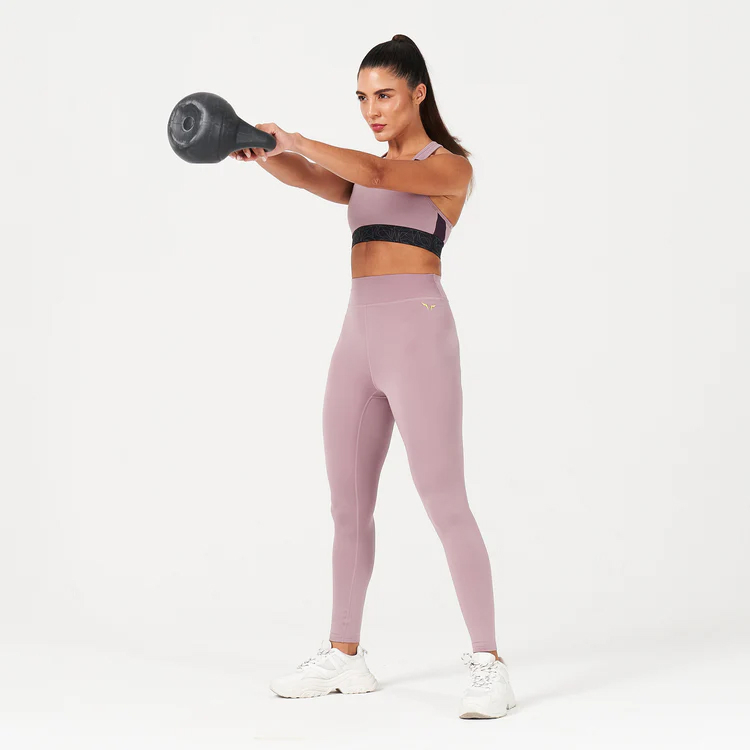
The kettlebell swing is a cornerstone exercise in many fitness regimens. While the basic motion is powerful in itself, exploring its variations can bring about new challenges and enhanced results. Let’s delve into some popular kettlebell swing workouts and see how they can further amplify your fitness journey.
Standard Two-Handed Swing
The foundation of all kettlebell swings, the two-handed version, is where everyone begins. By holding the kettlebell with both hands, you ensure stability and get a feel for the movement.
This base form allows you to focus on the hip hinge, breathing pattern, and kettlebell swing benefits like full-body muscle activation. Once you master this, you’re set to experiment with other variations.
Try these 5 exercises for a complete resistance band shoulder workout!
Single-Arm Swing
Looking to add a twist to the traditional swing? The single-arm variation introduces an element of instability. By swinging the kettlebell with one arm, you challenge your body’s balance.
This adjustment not only works the primary kettlebell swing muscles worked in the standard version but also demands increased core activation to maintain alignment. This version is perfect for those looking to engage their obliques and shoulders a bit more.
Try these 4 lat workouts for a stronger back!
Alternate-Arm Swing
Coordination takes the front seat with the alternate-arm swing. As the name suggests, you’ll switch the kettlebell from one hand to the other at the peak of each swing.
This dynamic shift enhances muscle engagement and tests your body’s adaptability. As you get the rhythm, you’ll notice improved hand-eye coordination and even more kettlebell swing benefits, as your body continuously adjusts to the alternating pattern.
Try these 6 hamstring exercises for a stronger lower body!
Integrating Kettlebell Swings into Your Daily Fitness Routine
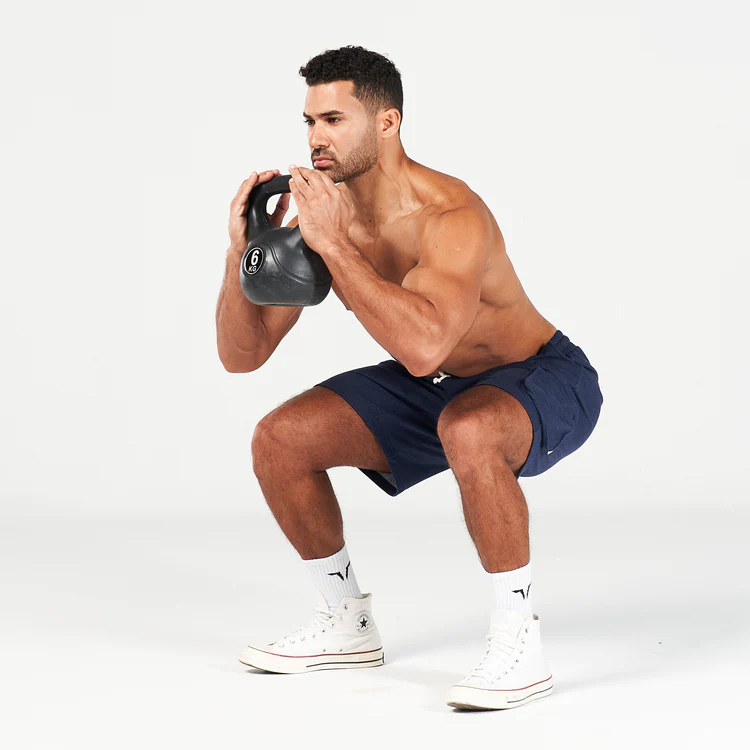
Here’s a table format for better visualization on how you can effectively integrate kettlebell swing workouts into your fitness routine:
| Tips | Frequency | Volume | Other Exercises |
| Start Slow | 2-3 times per week | Begin with 2 sets of 10 reps | Pair with bodyweight exercises like squats and push-ups |
| Monitor Your Form | Maintain consistency | Gradually increase by 5 reps every week | Mix with plyometric drills like box jumps |
| Focus on kettlebell swing benefits like muscle activation | Ideally every other day | Aim for 3-4 sets | Combine with core and ab workouts like planks and Russian twists |
| Adjust according to your stamina | Avoid back-to-back days | Vary between high reps (lighter weight) & low reps (heavier weight) | Intersperse with aerobic exercises like jump rope or jogging |
| Consult a fitness professional if unsure | Listen to your body | Don’t exceed your comfort zone; ensure recovery time | Incorporate flexibility drills like yoga or static stretching after sessions |
Remember, kettlebell swings offer versatile benefits. Whether it’s for strength or cardio, be sure to integrate them in a way that complements your fitness goals and respects your body’s recovery needs.
Make sure you do cool down exercises for a speedy post-workout recovery!
Final Thoughts
Wrapping up, we see that kettlebell swings pack a real punch in fitness. Kettlebell swing workouts not only highlight the exercise’s importance but also remind us to stay dedicated, use the right technique, and stay consistent. Like any workout, commitment brings results. Embrace the holistic benefits of kettlebell swings, and let it be a game-changer in your fitness regimen.
Frequently Asked Questions
Yes! Kettlebell swing workouts help in burning belly fat. The kettlebell swing boosts your heart rate while working multiple muscles, especially the core. This dual action of strength and cardio aids in burning calories. When you combine kettlebell swings with a good diet, it can reduce overall body fat, including the belly. However, you can’t only target the belly area; fat loss happens throughout the body.
Exercising with kettlebells every day can transform your body in multiple ways. Regular kettlebell swing workouts strengthen a wide range of muscles, from your core to your legs. This daily strength training can result in improved muscle tone and definition.
Moreover, the cardiovascular aspect of kettlebell workouts helps enhance heart health and increases calorie burn, potentially aiding in weight loss.
However, it’s crucial to maintain proper technique to avoid injury and to allow your muscles adequate rest. Overworking can lead to fatigue, decreased performance, or even injury. As always, it’s best to listen to your body and balance intensity with recovery.
The ideal kettlebell weight varies based on your fitness level and the type of workout.
For beginners starting with kettlebell swing workouts, it’s recommended to choose a lighter weight to master the technique.
Women might begin with an 8 to 12 kg (18 to 26 lbs) kettlebell, while men might opt for a 12 to 20 kg (26 to 44 lbs) kettlebell.
As you become accustomed to the movement and build strength, you can gradually increase the weight. Remember, the key is to maintain proper form to reap the full kettlebell swing benefits and avoid injury. It’s always a good idea to consult with a fitness professional when selecting the right weight for your needs.
Absolutely, kettlebell workouts are effective when done correctly. The dynamic movements in kettlebell swing workouts engage multiple muscle groups simultaneously, providing both strength training and cardiovascular benefits.
Consistent kettlebell training can help improve muscle tone, boost endurance, and aid in calorie burn. Plus, the diverse kettlebell swing benefits, from enhancing core stability to increasing overall power, make them a versatile fitness tool.
Like any exercise regimen, the results come from consistent practice, proper technique, and integrating kettlebell exercises into a balanced fitness routine.
Yes, a 20-minute kettlebell workout can be efficient and effective if done with intensity and proper form. Kettlebell swing workouts are known for their ability to offer both strength training and cardio benefits.
In 20 minutes, you can engage multiple muscle groups, elevate your heart rate, and burn a significant number of calories. While the duration is shorter, the key is to maintain consistent effort and ensure you’re using the right techniques to reap the full kettlebell swing benefits.
Like any exercise, it’s essential to listen to your body and adjust the duration and intensity based on your fitness level and goals.

